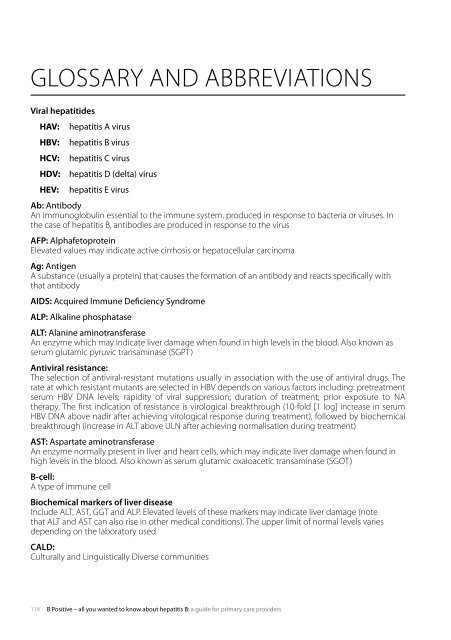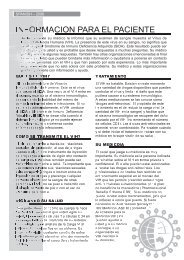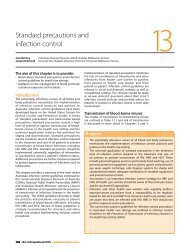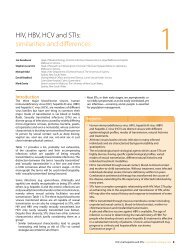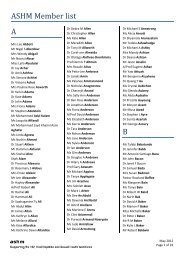B Positive – all you wanted to know about - ASHM
B Positive – all you wanted to know about - ASHM
B Positive – all you wanted to know about - ASHM
Create successful ePaper yourself
Turn your PDF publications into a flip-book with our unique Google optimized e-Paper software.
GLOSSARY AND ABBREVIATIONS<br />
Viral hepatitides<br />
HAV: hepatitis a virus<br />
HBV: hepatitis b virus<br />
HCV: hepatitis c virus<br />
HDV: hepatitis d (delta) virus<br />
HEV: hepatitis e virus<br />
Ab: antibody<br />
An immunoglobulin essential <strong>to</strong> the immune system, produced in response <strong>to</strong> bacteria or viruses. In<br />
the case of hepatitis B, antibodies are produced in response <strong>to</strong> the virus<br />
AFP: alphafe<strong>to</strong>protein<br />
Elevated values may indicate active cirrhosis or hepa<strong>to</strong>cellular carcinoma<br />
Ag: antigen<br />
A substance (usu<strong>all</strong>y a protein) that causes the formation of an antibody and reacts specific<strong>all</strong>y with<br />
that antibody<br />
AIDS: acquired immune deficiency syndrome<br />
ALP: alkaline phosphatase<br />
ALT: alanine aminotransferase<br />
An enzyme which may indicate liver damage when found in high levels in the blood. Also <strong>know</strong>n as<br />
serum glutamic pyruvic transaminase (SGPT)<br />
Antiviral resistance:<br />
The selection of antiviral-resistant mutations usu<strong>all</strong>y in association with the use of antiviral drugs. The<br />
rate at which resistant mutants are selected in HBV depends on various fac<strong>to</strong>rs including: pretreatment<br />
serum HBV DNA levels; rapidity of viral suppression; duration of treatment; prior exposure <strong>to</strong> NA<br />
therapy. The first indication of resistance is virological breakthrough (10-fold [1 log] increase in serum<br />
HBV DNA above nadir after achieving virological response during treatment), followed by biochemical<br />
breakthrough (increase in ALT above ULN after achieving normalisation during treatment)<br />
AST: aspartate aminotransferase<br />
An enzyme norm<strong>all</strong>y present in liver and heart cells, which may indicate liver damage when found in<br />
high levels in the blood. Also <strong>know</strong>n as serum glutamic oxaloacetic transaminase (SGOT)<br />
B-cell:<br />
A type of immune cell<br />
Biochemical markers of liver disease<br />
Include ALT, AST, GGT and ALP. Elevated levels of these markers may indicate liver damage (note<br />
that ALT and AST can also rise in other medical conditions). The upper limit of normal levels varies<br />
depending on the labora<strong>to</strong>ry used<br />
CALD:<br />
Cultur<strong>all</strong>y and Linguistic<strong>all</strong>y Diverse communities<br />
114 b <strong>Positive</strong> <strong>–</strong> <strong>all</strong> <strong>you</strong> <strong>wanted</strong> <strong>to</strong> <strong>know</strong> <strong>about</strong> hepatitis b: a guide for primary care providers


